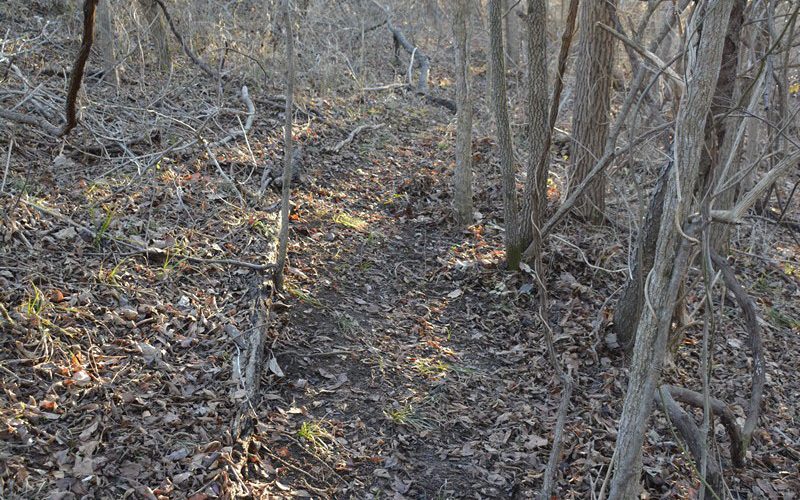Thought required before creating a new trail
AMANDA BANCROFT
Making Ripples
There are many paths in life that could be considered the “right” path. Everyone has the right to create a custom lifestyle that’s best for their needs and fits within their goals and restrictions. But try to ensure your path is guided by the lighthouse of love.
Are we unnecessarily harming anything or anyone? That’s one of the core tenets of sustainable trail blazing. When thinking about where a trail should go, fun is not the only factor. Considerations like erosion, usage types and preserving native vegetation are some examples. Sure, there are probably going to be more places than one to build a trail and myriad methods, many of them equally good. But if recreation is the only goal, we get problems.
Problems like native habitat destruction. If you can weave around a big old native tree instead of chopping it down, do so (preferably above it, if it’s on a slope, rather than below, disturbing roots). If you can leave some of those rocks that make excellent reptile homes, please do. Minimize erosion with tactics such as switchbacks and signs telling hikers not to take shortcuts.
One example (perhaps extreme but also extremely cute, educational and empowering) was my recent experience blazing my second trail near our cabin. I needed a flat rock for a small gully crossing near the old spring house, and I found a good one just above the gap. When I flipped it over, I made sure of careful finger placement and good back posture, and tilted the rock between myself and whatever might be living underneath, as a sort of shield. Much to my surprise, there was a colony of large black ants huddled together in a muddy hollow!
Every autumn, ants store up extra fat and hibernate through winter in warm places such as underneath a rock that will absorb the heat from sunlight. They huddle around their queen to ensure she stays warm. Since I was about to remove their roof, I found an alternate rock and replaced it before the colony was too exposed. A day later, I checked on them, and all was well.

“Two trails merge in the woods five miles south of Fayetteville. A natural “doorway” (where saplings have grown up parallel to each other, twisted with vines) makes paths feel intentional but unobtrusive.”
(Courtesy Photo/Amanda Bancroft)
After years of volunteering on trails elsewhere, attending the Northwest Arkansas Master Naturalist training on trails, and receiving the guidebook by the USDA, “Trail Construction and Maintenance,” with over 100 pages containing things I never thought I needed to know about trails, last year I built my first short trail (about 100 feet) down to the pond. This was needed for monitoring the dam and spillway and for rehab turtle releases.
It was a huge success, and so was the second one. For these trails on private land, all I needed was appropriate clothing, gloves, boots, a pair of loppers and a rake. It’s important to commit to long-term care of trails before they’re built; otherwise, they become unusable or degraded from use without mitigation. Wildlife continue to use the area around my two trails, and my reward for all that work is an easier time monitoring and enjoying the natural world.
Amanda Bancroft is a writer, artist, and naturalist living in an off-grid tiny house on Kessler Mountain. She and her husband Ryan blog about their adventures and offer tips to those wanting to make a difference at www.RipplesBlog.org.










